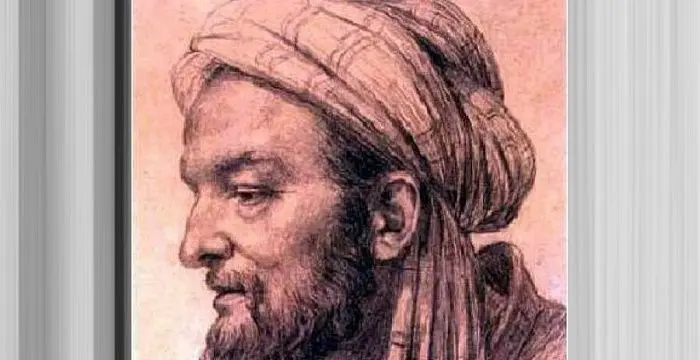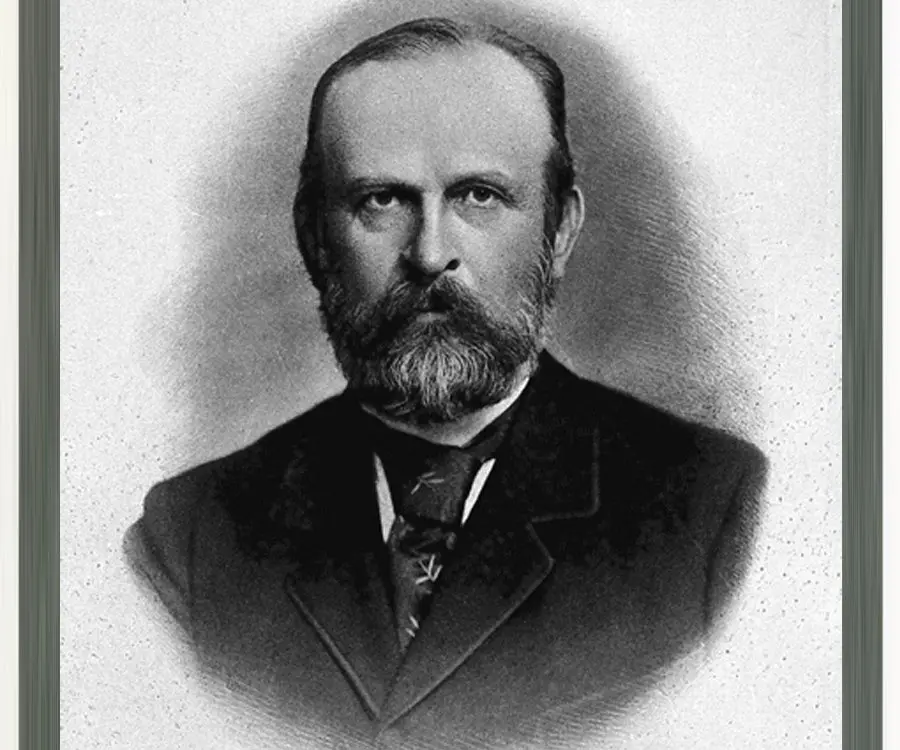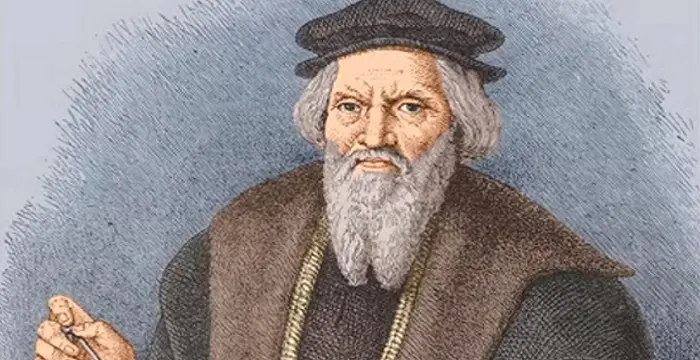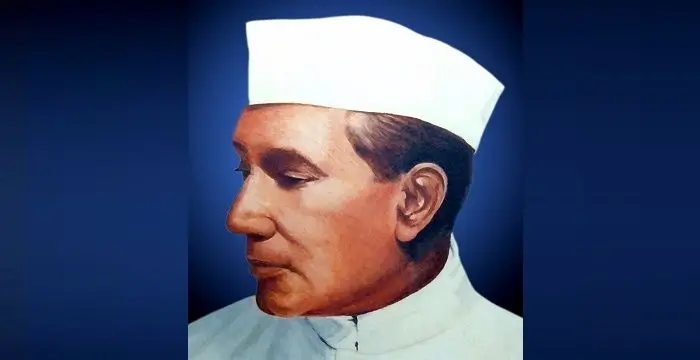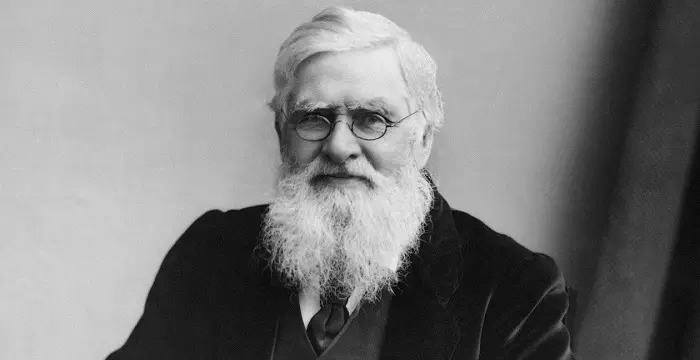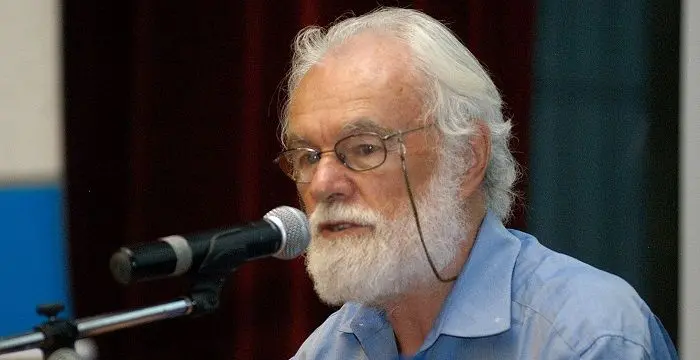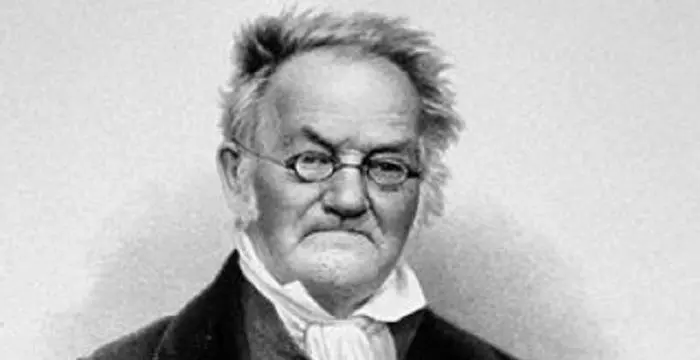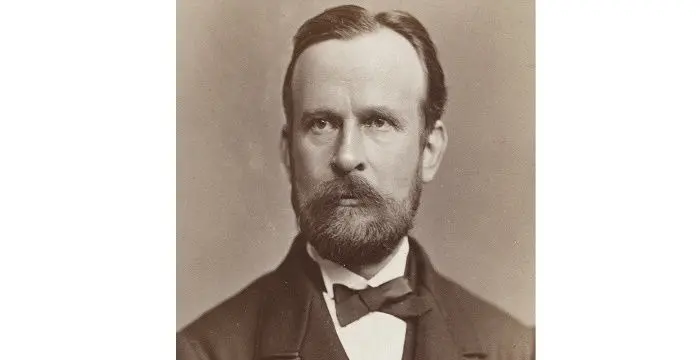
Ferdinand von Richthofen - Traveler, Birthday and Life
Ferdinand von Richthofen's Personal Details
Ferdinand Freiherr von Richthofen was a German geographer, geologist and traveler
| Information | Detail |
|---|---|
| Birthday | May 5, 1833 |
| Died on | October 6, 1905 |
| Nationality | German |
| Famous | Intellectuals & Academics, Geographers, Scientists, Geologists, Explorers, Traveler |
| Spouses | Irmgard von Richthofen |
| Known as | Ferdinand Freiherr von Richthofen |
| Universities |
|
| Birth Place | Carlsruhe, Prussian Silesia |
| Gender | Male |
| Father | Karl Richthofen |
| Mother | Ferdinande Richthofen |
| Sun Sign | Taurus |
| Born in | Carlsruhe, Prussian Silesia |
| Famous as | Geographer, Traveler, Scientist |
| Died at Age | 72 |
// Famous Traveler
Muhammad al-Idrisi
Muhammad al-Idrisi was a Muslim cartographer, geographer, traveler and Egyptologist. This biography provides detailed information about his childhood, life, work, achievements and timeline.
Ferdinand von Richthofen's photo
Who is Ferdinand von Richthofen?
Ferdinand Freiherr von Richthofen was a German geographer, geologist and traveller best known for his work in China that included coining the terms “Silk Road” or “Silk Route” for the foreign trade routes of the country. He also termed the hilly red sandstone plain comprising the central and eastern regions of Sichuan province in south-western China as “Red Basin”. He travelled extensively through eleven of eighteen provinces in China conducting geographic and geological research work and later wrote the impressive geological treatise of five volumes along with a two volume atlas, which was entitled ‘China Cartographica’. It became the first serious European study on the geography of China, which continued to be the standard for several years. Throughout his career he conducted geological research in several regions including the Dolomite Alps, Japan, Philippines, Ceylon, Myanmar, Bangkok and California among others. During the later years of his life he served as a Professor of Geography in many German Universities. He standardised the procedures of chorology, the study of regions and places, and chorography, the art of mapping or describing a region. Present day geologists consider him a stratigrapher. Richthofen helped in establishing the science of geomorphology and is recognised by the geomorphologists as one of the leading pioneers of modern development of the field.
// Famous Explorers
John Cabot
John Cabot was an Italian navigator and explorer who was the first European to discover the coast of North America. Check out this biography to know about his childhood, life, and achievements.
Marco Polo
Marco Polo was the legendary Italian merchant, explorer and traveler, who travelled to China and worked under emperor, Kublai Khan. Read this biography to learn more about his profile, childhood, life and timeline.
Bear Grylls
Bear Grylls is an adventurer popularly known for his bizarre survival tactics in reality television series Man vs. Wild. This biography provides detailed information about his childhood, profile, career and timeline.
Childhood & Early Life
He was born on May 5, 1833, in Carlsruhe, Prussian Silesia, in to Karl Richthofen and Ferdinande Richthofen.
He attended the Catholic Gymnasium in Breslau (at present Wroclaw) to complete his secondary education. Thereafter he enrolled at the ‘University of Breslau’ in 1850 to study geology.
After a couple of years he joined the ‘University of Berlin’’ from where he completed his graduation in 1856.
Around 1857 he joined a team of distinguished geologists and embarked on a geological tour of the Vorarlberg Alps and the Alps of Tyrol. He was designated the duty to compile the combined report while carrying on the survey. His independent publication on Alpine geology ‘Geognostische Beschreibung der Umgegend von Predazzo…’ (1860) received accolades from all over. He efficiently detailed about the Triassic succession in the South Tirol as also the circumstances that led to its formation. Contrary to the earlier catastrophic perception, Richthofen held slow crustal movements as the reason for alterations in the form of terrain and the tectonic disturbances.
He furthered his studies to the trachytic mountain ranges of the Carpathians in Transylvania with the support of the ‘Austrian Imperial Geological Institute’.
Career
He joined the Prussian government mission, the ‘Eulenburg Expedition’ in 1860 as a geologist and till 1862 travelled Southeast Asia and the Far East including Japan, Ceylon, Celebes, Taiwan, the Philippines, Java, Burma and Siam. However nothing of significance came out of the expedition, and most of his records and collections were lost.
In June 1862, he went to California, United States and till 1868 worked there as a geologist and reported on mineral wealth and gold strikes to German newspapers. He identified a clear-cut series of igneous rocks, from propylite to trachyte in the ‘Sierra Nevada’ and the ‘Rocky Mountains’. Some such geological expeditions of Richthofen led to the discovery of goldfields.
Although he strived to explore China earlier, the ongoing ‘Taiping rebellion’ (1850-64), the civil war in China posed a problem making the country inaccessible. It was only in September 1868, four years post the civil war that he could succeed in his mission of visiting the country.
The China trip was initially financed by the ‘Bank of California’ and afterwards by the ‘Chamber of Commerce of Shanghai’ and in return he had to send reports in English regarding the economic resources of the regions he explored.
Till 1872 he explored eleven out of eighteen Chinese provinces and compiled a series of reports of such expeditions, which were published as ‘Letters on China’ (Shanghai, 1870–72). These reports were the first to suggest the significance of the Shantung coalfield and also attached prominence on the commercial potentiality of Tsingtao, a port that was later occupied by the Germans.
Richthofen was the first one to figure out that the fine Aeolian dust, which blew from the deserts of the west, deposited gradually in China over the centuries. It was the origin of the loess soil deposits of northern China. He also spotted the dried-up lake bed of Lop Nur in China.
He returned to Germany in 1872 and for the next 33 years he mostly spent in lecturing and writing on China and advocating in support of geography in the universities of Germany.
In 1875 he was inducted by the ‘University of Bonn’ as a Professor of Geology, however he could undertake his professional commitments only in 1879 as he was fully engrossed with his work on compiling the first volume and a part of the second on China.
In 1877 he coined the terms ‘Seidenstraße’ and ‘Seidenstraßen’ meaning ‘Silk Road’ or ‘Silk Route’ for the trade routes that connected the western world and the eastern world from China to the Mediterranean Sea.
In 1883 he began to serve the ‘University of Leipzig’ as a Professor of Geography.
From 1886 till his death he remained the Professor of Geography at the ‘Friedrich Wilhelm University’ of Berlin.
Many of his students including Sven Hedin, Alfred Philippson, Wilhelm Sievers and Arthur Berson became eminent and some of them held prominent chairs in geography.
For several years he served the ‘German Geographical Society’ as the President.
He acted as rector of the ‘University of Berlin’ in 1903 and delivered a noteworthy address titled ‘Triebkräfte und Richtungen der Erdkunde im neunzehnten Jahrhundert’. He was on the verge of completing the ‘Museum für Meereskunde’ at the university during the later stage of his life, which was finally completed by his successor Albrecht Penck.
He also founded the ‘Berlin Hydrographical Institute’.
His German publications included ‘Die Kalkalpen von Vorarlberg und Nordtirol’ (from 1859 to 1861); ‘Die Metallproduktion Kaliforniens’ (1865); ‘China, Ergebnisse eigner Reisen und darauf gegründeter Studien’ (China: The results of my travels and the studies based thereon, 1877–1912) five volumes and atlas; and ‘Führer für Forschungsreisende’ (A guide for the traveling researcher, 1886).
The English publications of Richthofen included ‘Comstock Lode: Its Character, and the Probable Mode of Its Continuance in Depth’ in1866; ‘Principles of the Natural System of Volcanic Rocks’ in 1867; and ‘Letters to the Shanghai Chamber of Commerce’ from 1869 to 1872.
Major Works
His major contributions included stratigraphy of the Alpine, the geography and geology of China, standardising the procedures of chorology and chorography, and establishing the science of geomorphology.
Personal Life & Legacy
In 1879 he got married to Irmgard von Richthofen.
He was an uncle of Manfred von Richthofen, famously known as the ‘Red Baron’, an ace German fighter pilot.
On October 6, 1905, he succumbed to a sudden stroke in Berlin at the age of 72.
Trivia
The ‘Richthofen Range’ (at present known as the ‘Qilian Mountains’), located in-between the Gansu and the Qinghai provinces of northern China, was named after him.
The ‘Mount Richthofen’ located in the ‘Rocky Mountain National Park’ with a height of 12940 ft. is also named in his honour.
// Famous Geologists
Robert Ballard
Dr. Robert Ballard is the founder of the Ocean Exploration Center and specializes in deep-sea archeology. This biography contains information about his childhood, life, achievements & timeline.
Charles Darwin
Charles Darwin was one of the most influential figures in human history. Go through this biography to get details about his life, profile and timeline.
Birbal Sahni
Birbal Sahni was an Indian palaeobotanist who founded the Birbal Sahni Institute of Palaeobotany in Lucknow. This biography of Birbal Sahni provides detailed information about his childhood, life, achievements, works & timeline.
Ferdinand von Richthofen's awards
| Year | Name | Award |
|---|---|---|
Other | ||
| 0 | Wollaston Medal (1892) | |
| 0 | Vega Medal (1903) | |
Ferdinand von Richthofen biography timelines
- // 5th May 1833He was born on May 5, 1833, in Carlsruhe, Prussian Silesia, in to Karl Richthofen and Ferdinande Richthofen.
- // 1850He attended the Catholic Gymnasium in Breslau (at present Wroclaw) to complete his secondary education. Thereafter he enrolled at the ‘University of Breslau’ in 1850 to study geology.
- // 1850 To Sep 1868Although he strived to explore China earlier, the ongoing ‘Taiping rebellion’ (1850-64), the civil war in China posed a problem making the country inaccessible. It was only in September 1868, four years post the civil war that he could succeed in his mission of visiting the country.
- // 1856After a couple of years he joined the ‘University of Berlin’’ from where he completed his graduation in 1856.
- // 1857 To 1860Around 1857 he joined a team of distinguished geologists and embarked on a geological tour of the Vorarlberg Alps and the Alps of Tyrol. He was designated the duty to compile the combined report while carrying on the survey. His independent publication on Alpine geology ‘Geognostische Beschreibung der Umgegend von Predazzo…’ (1860) received accolades from all over. He efficiently detailed about the Triassic succession in the South Tirol as also the circumstances that led to its formation. Contrary to the earlier catastrophic perception, Richthofen held slow crustal movements as the reason for alterations in the form of terrain and the tectonic disturbances.
- // 1860 To 1862He joined the Prussian government mission, the ‘Eulenburg Expedition’ in 1860 as a geologist and till 1862 travelled Southeast Asia and the Far East including Japan, Ceylon, Celebes, Taiwan, the Philippines, Java, Burma and Siam. However nothing of significance came out of the expedition, and most of his records and collections were lost.
- // Jun 1862 To 1868In June 1862, he went to California, United States and till 1868 worked there as a geologist and reported on mineral wealth and gold strikes to German newspapers. He identified a clear-cut series of igneous rocks, from propylite to trachyte in the ‘Sierra Nevada’ and the ‘Rocky Mountains’. Some such geological expeditions of Richthofen led to the discovery of goldfields.
- // 1870 To 1872Till 1872 he explored eleven out of eighteen Chinese provinces and compiled a series of reports of such expeditions, which were published as ‘Letters on China’ (Shanghai, 1870–72). These reports were the first to suggest the significance of the Shantung coalfield and also attached prominence on the commercial potentiality of Tsingtao, a port that was later occupied by the Germans.
- // 1872He returned to Germany in 1872 and for the next 33 years he mostly spent in lecturing and writing on China and advocating in support of geography in the universities of Germany.
- // 1875 To 1879In 1875 he was inducted by the ‘University of Bonn’ as a Professor of Geology, however he could undertake his professional commitments only in 1879 as he was fully engrossed with his work on compiling the first volume and a part of the second on China.
- // 1877In 1877 he coined the terms ‘Seidenstraße’ and ‘Seidenstraßen’ meaning ‘Silk Road’ or ‘Silk Route’ for the trade routes that connected the western world and the eastern world from China to the Mediterranean Sea.
- // 1879In 1879 he got married to Irmgard von Richthofen.
- // 1883In 1883 he began to serve the ‘University of Leipzig’ as a Professor of Geography.
- // 1886From 1886 till his death he remained the Professor of Geography at the ‘Friedrich Wilhelm University’ of Berlin.
- // 1903He acted as rector of the ‘University of Berlin’ in 1903 and delivered a noteworthy address titled ‘Triebkräfte und Richtungen der Erdkunde im neunzehnten Jahrhundert’. He was on the verge of completing the ‘Museum für Meereskunde’ at the university during the later stage of his life, which was finally completed by his successor Albrecht Penck.
- // 6th Oct 1905On October 6, 1905, he succumbed to a sudden stroke in Berlin at the age of 72.
// Famous Geographers
Jabir Ibn Hayyan
Jabir Ibn Hayyan was a medieval era polymath. Check out this biography to know about his life, works and achievements.
Hipparchus
Hipparchus was a Greek astronomer and mathematician. This biography profiles his childhood, life, achievements and timeline.
Alfred Russel Wallace
Alfred Russel Wallace was a British scientist and explorer, best known for discovering the concept of evolution by natural selection. This biography of Alfred Wallace provides information about his childhood, life, achievements, works & timeline.
David Harvey
David W. Harvey is a British Distinguished Professor of Anthropology and Geography at The Graduate Center of City University of New York (CUNY). This biography profiles his childhood, life, academic career, achievements and timeline.
Nikolay Przhevalsky
Nikolay Przhevalsky was a Russian explorer who contributed significantly to European knowledge of Central Asia. This biography of Nikolay Przhevalsky provides detailed information about his childhood, life, achievements, works & timeline.
Carl Ritter
Carl Ritter was a famous German geographer, who, along with Alexander von Humboldt, founded the modern geographical science. Check out this biography to know about his childhood, life, achievements, works & timeline.
Ferdinand von Richthofen's FAQ
What is Ferdinand von Richthofen birthday?
Ferdinand von Richthofen was born at 1833-05-05
When was Ferdinand von Richthofen died?
Ferdinand von Richthofen was died at 1905-10-06
Where was Ferdinand von Richthofen died?
Ferdinand von Richthofen was died in Berlin, German Empire
Which age was Ferdinand von Richthofen died?
Ferdinand von Richthofen was died at age 72
Where is Ferdinand von Richthofen's birth place?
Ferdinand von Richthofen was born in Carlsruhe, Prussian Silesia
What is Ferdinand von Richthofen nationalities?
Ferdinand von Richthofen's nationalities is German
Who is Ferdinand von Richthofen spouses?
Ferdinand von Richthofen's spouses is Irmgard von Richthofen
What was Ferdinand von Richthofen universities?
Ferdinand von Richthofen studied at University of Breslau, University of Berlin
Who is Ferdinand von Richthofen's father?
Ferdinand von Richthofen's father is Karl Richthofen
Who is Ferdinand von Richthofen's mother?
Ferdinand von Richthofen's mother is Ferdinande Richthofen
What is Ferdinand von Richthofen's sun sign?
Ferdinand von Richthofen is Taurus
How famous is Ferdinand von Richthofen?
Ferdinand von Richthofen is famouse as Geographer, Traveler, Scientist
